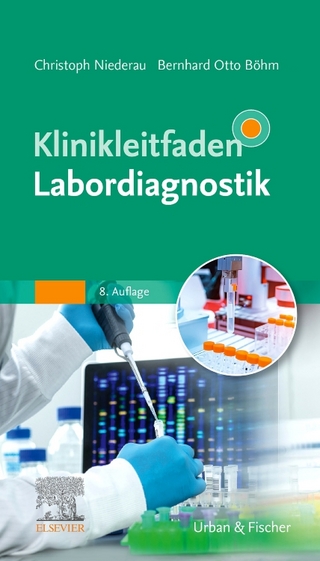
Nursing Health Assessment
Seiten
2018
|
Third, International Edition
Lippincott Williams and Wilkins (Verlag)
978-1-4963-5842-4 (ISBN)
Lippincott Williams and Wilkins (Verlag)
978-1-4963-5842-4 (ISBN)
- Titel erscheint in neuer Auflage
- Artikel merken
Zu diesem Artikel existiert eine Nachauflage
Develop the assessment knowledge and skills to excel in any clinical setting.
Updated to reflect today’s changing healthcare environment, this unique, modern approach to health assessment guides you progressively through realistic clinical case scenarios, emphasizing health promotion, risk factor reduction, evidence-based thinking, and diagnostic reasoning. Effective strategies help you adapt questions and techniques to confidently manage communication challenges, unexpected patient responses, changes in a patient’s condition over time, and more.
Highlights of the Third Edition
Progressive Case Studies in each chapter help you capably apply concepts to clinical practice through:
Therapeutic Dialogue displays that hone the communication and critical thinking skills essential for gathering assessment data.
Progress Note sections that provide sample SOAP (Subjective data, Objective data, Analysis, and Plan) notes documenting summaries of findings, with accompanying critical thinking questions.
Documenting Case Study Findings boxes that summarize abnormal findings in the physical examination (determined through inspection, palpation, percussion, and auscultation).
Collaborating With the Interprofessional Team displays that feature SBAR (Situation, Background, Analysis or Assessment, and Recommendations) frameworks for effectively coordinating referrals or other patient advocacy needs.
Clinical Reasoning in Action sections that demonstrate how to bring all the elements of assessment together to determine a nursing diagnosis and related goals, interventions, rationales, and evaluation criteria.
NEW! Unfolding case-based vignettes written by the National League for Nursing place concepts in a realistic context and encourage classroom discussion.
NEW! Concept Mastery Alerts clarify potentially confusing topics.
More than 70 NANDA-I Diagnoses with official definitions and defining characteristics
Learning Objectives focus on critical information and can help you study more effectively.
Clinical Significance boxes emphasize content critically related to clinical application.
Safety Alert boxes highlight areas of concern or results that require immediate intervention or adjustments.
Key Points summarized at the end of each chapter reinforce the most important content at a glance.
Review Questions help you identify content requiring additional review.
Tables of Abnormal Findings facilitate fast, effective assessments.
Accompanying interactive learning resources such as videos and animations, referenced with icons in the text, appeal to a variety of learning styles
Updated to reflect today’s changing healthcare environment, this unique, modern approach to health assessment guides you progressively through realistic clinical case scenarios, emphasizing health promotion, risk factor reduction, evidence-based thinking, and diagnostic reasoning. Effective strategies help you adapt questions and techniques to confidently manage communication challenges, unexpected patient responses, changes in a patient’s condition over time, and more.
Highlights of the Third Edition
Progressive Case Studies in each chapter help you capably apply concepts to clinical practice through:
Therapeutic Dialogue displays that hone the communication and critical thinking skills essential for gathering assessment data.
Progress Note sections that provide sample SOAP (Subjective data, Objective data, Analysis, and Plan) notes documenting summaries of findings, with accompanying critical thinking questions.
Documenting Case Study Findings boxes that summarize abnormal findings in the physical examination (determined through inspection, palpation, percussion, and auscultation).
Collaborating With the Interprofessional Team displays that feature SBAR (Situation, Background, Analysis or Assessment, and Recommendations) frameworks for effectively coordinating referrals or other patient advocacy needs.
Clinical Reasoning in Action sections that demonstrate how to bring all the elements of assessment together to determine a nursing diagnosis and related goals, interventions, rationales, and evaluation criteria.
NEW! Unfolding case-based vignettes written by the National League for Nursing place concepts in a realistic context and encourage classroom discussion.
NEW! Concept Mastery Alerts clarify potentially confusing topics.
More than 70 NANDA-I Diagnoses with official definitions and defining characteristics
Learning Objectives focus on critical information and can help you study more effectively.
Clinical Significance boxes emphasize content critically related to clinical application.
Safety Alert boxes highlight areas of concern or results that require immediate intervention or adjustments.
Key Points summarized at the end of each chapter reinforce the most important content at a glance.
Review Questions help you identify content requiring additional review.
Tables of Abnormal Findings facilitate fast, effective assessments.
Accompanying interactive learning resources such as videos and animations, referenced with icons in the text, appeal to a variety of learning styles
| Erscheinungsdatum | 04.12.2018 |
|---|---|
| Verlagsort | Philadelphia |
| Sprache | englisch |
| Gewicht | 2177 g |
| Themenwelt | Medizin / Pharmazie ► Pflege ► Ausbildung / Prüfung |
| Studium ► 2. Studienabschnitt (Klinik) ► Anamnese / Körperliche Untersuchung | |
| ISBN-10 | 1-4963-5842-2 / 1496358422 |
| ISBN-13 | 978-1-4963-5842-4 / 9781496358424 |
| Zustand | Neuware |
| Haben Sie eine Frage zum Produkt? |
Mehr entdecken
aus dem Bereich
aus dem Bereich
aus Klinik und Praxis
Buch | Softcover (2023)
Urban & Fischer (Verlag)
42,00 €
Buch | Hardcover (2017)
Hogrefe (Verlag)
60,00 €
Buch | Softcover (2024)
Urban & Fischer in Elsevier (Verlag)
56,00 €



